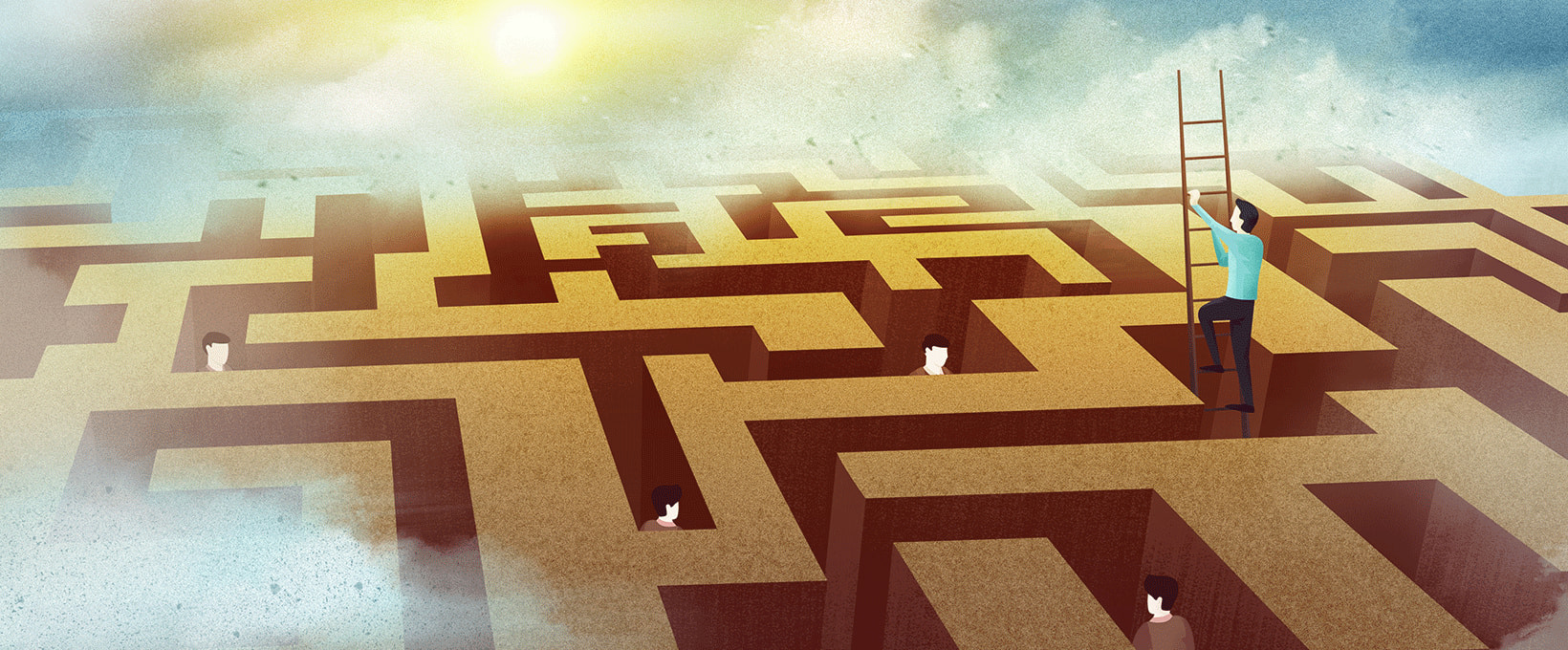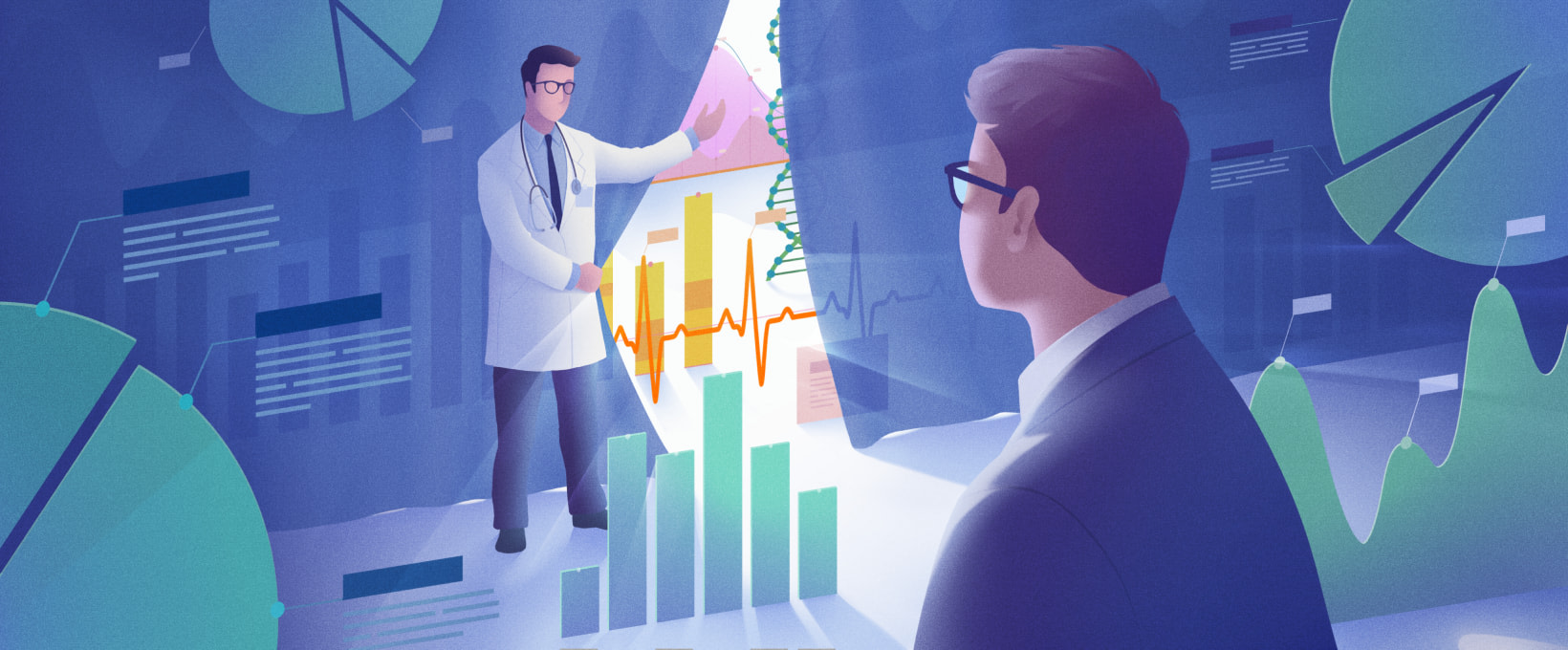- What is product discovery?
- Product discovery phase benefits
- Product discovery phase challenges
- Product discovery steps
- Conclusion
Product development has never been easy. According to Harvard Business School, nearly 95% of all startups fail, most of them due to a lack of planning. Obviously, no one can build a skyscraper or a manufacturing facility without detailed plans from architects, project managers, and engineers. However, when it comes to software projects, business owners might think that it’s possible to fix everything later as all they need is to start the development as fast as possible.
Although a website or a mobile app looks easier to build than a skyscraper, the complexity of software projects can’t be underestimated. According to ground-breaking research by McKinsey in 2012, 45% of software development projects run over budget, 7% of them run over time, and 56% of projects deliver less value than predicted. In this product discovery guide, Andersen’s experts in business analysis will provide valuable insights on how a thoroughly planned and adroitly implemented product discovery process helps us deliver best-in-class products.
What is product discovery?
In lay terms, a product discovery phase is a part of the planning phase where a roadmap is created and cost and term estimations are made.
As a rule, the product discovery process in Agile results in creating the following deliverables:
- Vision and Scope document with a description of the project scope, purpose, and constraints, as well as required software features;
- Design Concept, including creating personas, a user journey map, and wireframing based on business requirements;
- Architecture Vision document with the product overview and the required technology stack.
In some cases, product discovery results in avoiding further development and spending millions on a product that will be unprofitable. Therefore, turning to professional Business Analysts to conduct this stage allows companies to efficiently use resources by creating only the products that bring true value.
Product discovery phase benefits
Preliminary project analysis and planning offers, among other things, the following crucial benefits.
Reduced costs
Let’s recall the example of building a skyscraper. Imagine that you are constructing one, and when the fiftieth and final floor is ready, all of a sudden you realize that you have forgotten to build a staircase as there wasn’t a detailed plan in place. In this case, you really can do nothing. Fortunately, in software development, you can actually add “a staircase,” meaning that it’s possible to introduce changes in the middle of the development. However, such amendments can substantially increase the cost of the product and take the team more time to implement. Having a well-thought-out plan prior to the development will help you avoid situations when your project unexpectedly exceeds the budget.
Reduced time to market
Fast time to market is significant for any startup. Products often fail as, during their development, there is a danger of diving too deeply into details or falling into scope creep when all features seem essential. Without a clear and precise vision, there is a risk that you will spend your time, effort, and money in vain. In the course of product discovery, such a vision is created, and the whole team aligns with it.
Product discovery phase challenges
Along with the advantages that the product discovery process brings, it can also be convoluted and pose the following challenges.
Understanding user needs
When starting a new product, you should always remember that your assumptions about user needs might not be right. You are not your clients, therefore, your every hypothesis must be tested to properly create user personas.
Prioritization of requirements
Identifying user pain points and solutions to them is not easy but it’s only the beginning. A considerable part of a project’s success lies in the proper implementation of the key functionality with no core features missing. At the same time, postponing the implementation of some ideas is crucial as the product team must concentrate on the creation of a minimum viable product. In the course of the product discovery, the scope of the future MVP is outlined. This allows a vendor to provide a customer with a solution containing just enough features to solve the business problem and enter the market. And when the product is successful on the market, the customer can return to some of their ideas to improve and upgrade it.
Product discovery steps
Over the past fifteen years, Andersen has developed more than a thousand best-in-class solutions for customers from all over the world, and nearly all of our projects started with a product discovery phase. Our experience has resulted in the creation of a proven methodology used by our Business Analysts, Project Managers, IT Architects, UI/UX designers, and other specialists.
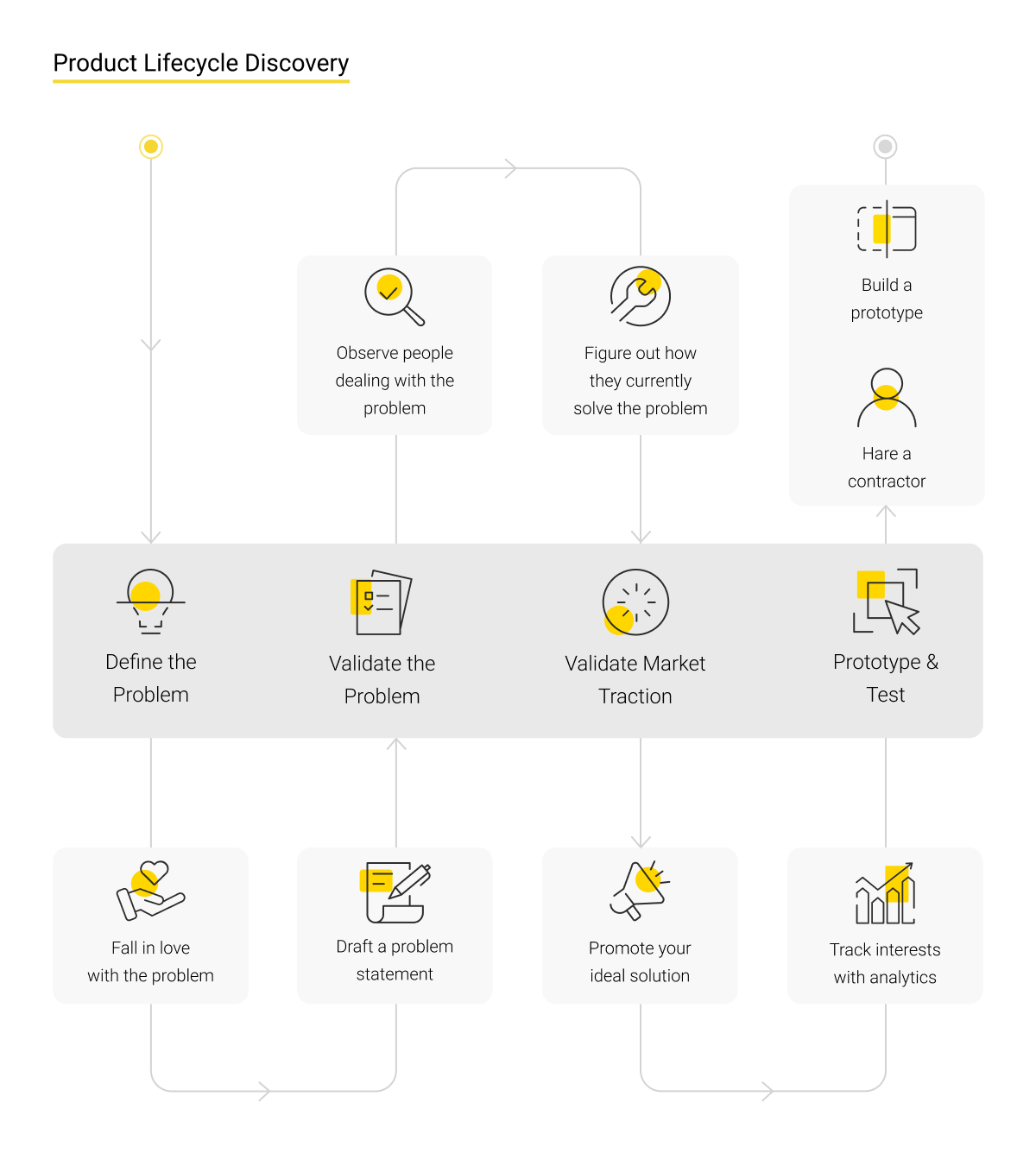
As a rule, the product discovery process at Andersen includes the following steps.
Understanding the market and users
Usually, our Business Analysts start their work by trying to develop a deep understanding of the problems of the product’s potential users and the ways to solve them. Sometimes at this point, the entire vision of the product is changed. The key deliverable in this step is user personas, developed and included in the Vision and Scope document. Below is an example of a user persona card for a B2B product. The card can differ from product to product, however, the idea behind it is to state the most important user parameters and their motivations while underlining their diversity. Creating such kinds of portraits is extremely useful for feature prioritization, as well as for generating product ideas.
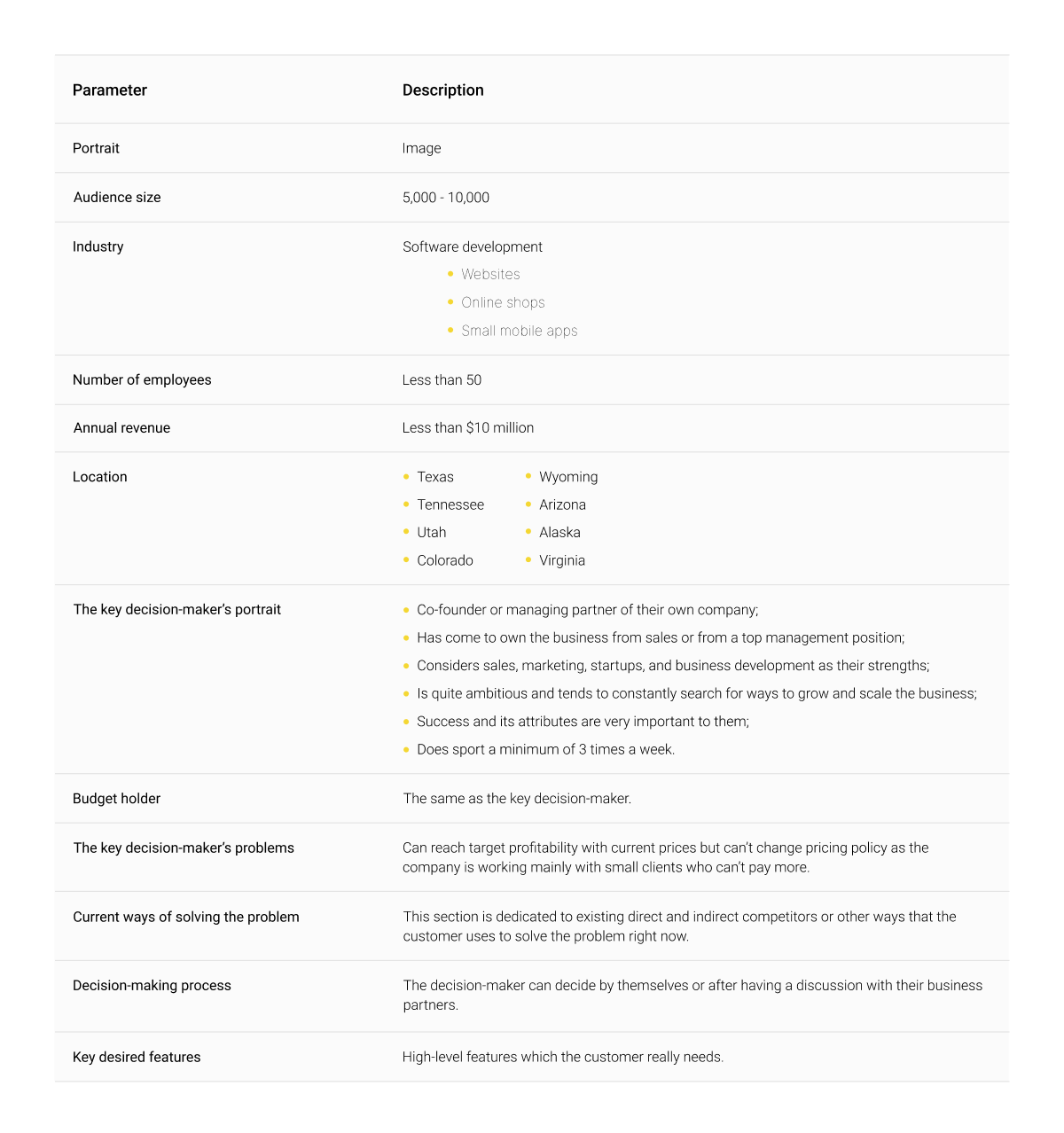
Verification of a business problem
Our vision of the problems of customers and their importance is just a hypothesis that needs to be tested. In this step, a vendor doesn’t propose solutions but just asks their customer questions to identify whether they really have a problem that needs to be solved. The key deliverable is a product backlog, consisting of user stories that are important to the customer. Sometimes, this step changes the entire product concept or even causes the discarding of the product idea. As a result, the customer helps the IT company’s specialists to figure out what exactly is going to be developed and why.
Proposing a solution
When it is known what solution is going to be built, it’s time to think about how to implement it. At this stage, high-level modeling is performed which includes the two types of modeling.
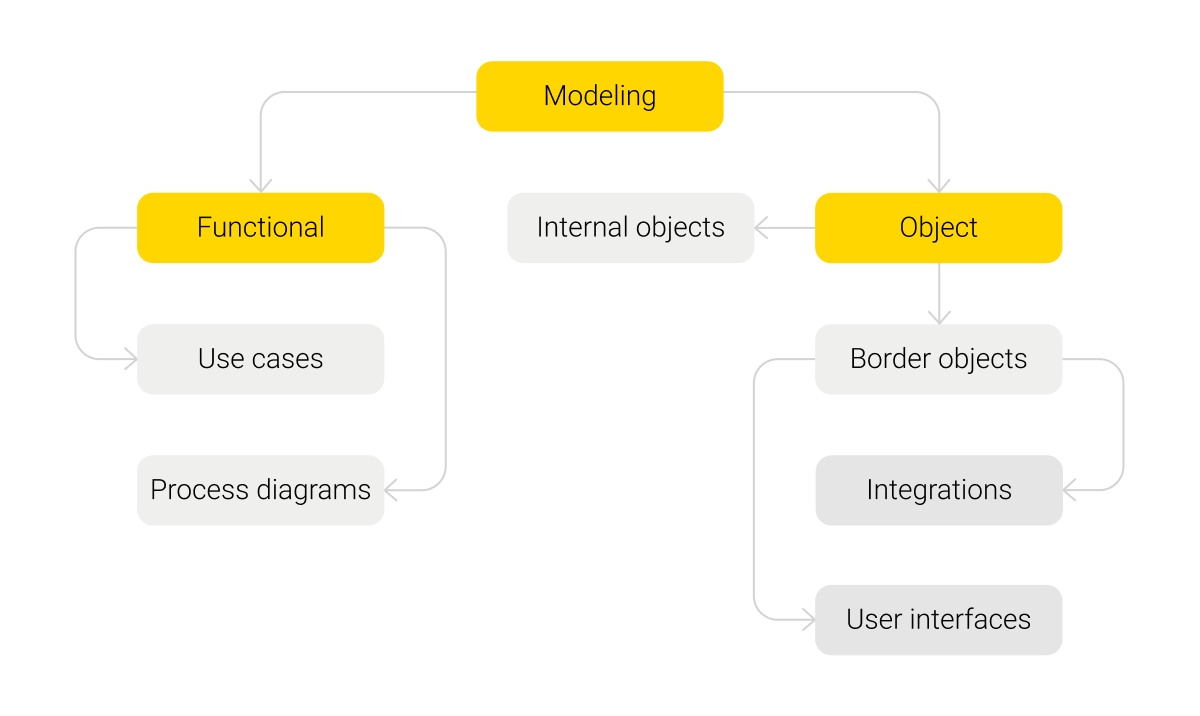
The goal of this step is to create a prototype that is just operational enough without diving too deeply into details. This helps the vendor to explain to the customer the basic principles of the product’s work and is used in testing.
Customer validation
In this step, the vendor presents product prototypes to its potential users to test them. Prototypes don’t necessitate writing code. They can be very simple and look like drawings on a napkin, however, as a rule, we deliver professionally created prototypes with the use of InVision, Adobe XD, and other tools. Customer validation is an iterative process. When the concept is good enough, the team moves to the next stage, leaving further improvements for the time when the product is already on the market.

Vision detailing and creation of a preliminary plan
Finally, it is clear what is going to be created and how it is going to work. Now it’s time to detail the vision and draw up a product plan that includes the following deliverables:
- Vision and Scope document;
- Design Concept;
- Technology stack;
- Architecture Vision document;
- Story map;
- Roadmap;
- Time and budget estimates;
- Risk mitigation plan.
The above plan shouldn’t be too detailed; it’s required to align the product team, outline the scope of an MVP, and plan time to market. A considerable amount of work needs to be done in the later stages. However, as a result of the product discovery process, the customer can be sure of the following:
- The product will bring them value;
- There is a clear vision of the future solution;
- There is an understanding of how much time and money the product development is going to take.
Conclusion
Product discovery is one of the most important stages of its lifecycle. It helps companies to mitigate risks, shorten time to market, and cut development costs.
In most cases, it takes Andersen’s team of experts from two to six weeks to conduct the product discovery phase. If you have a business idea in mind, feel free to contact us for a consultation, and we will be delighted to answer your questions and help you make your product a success.






